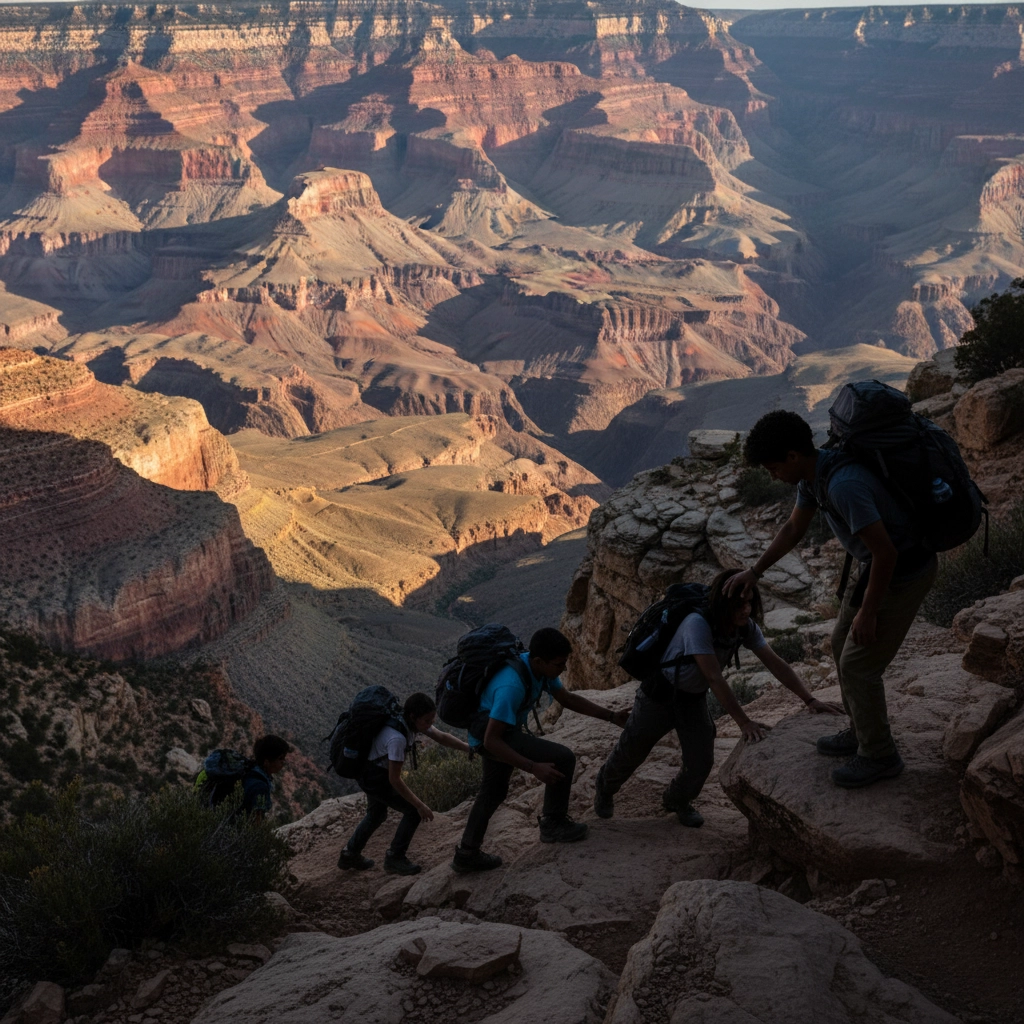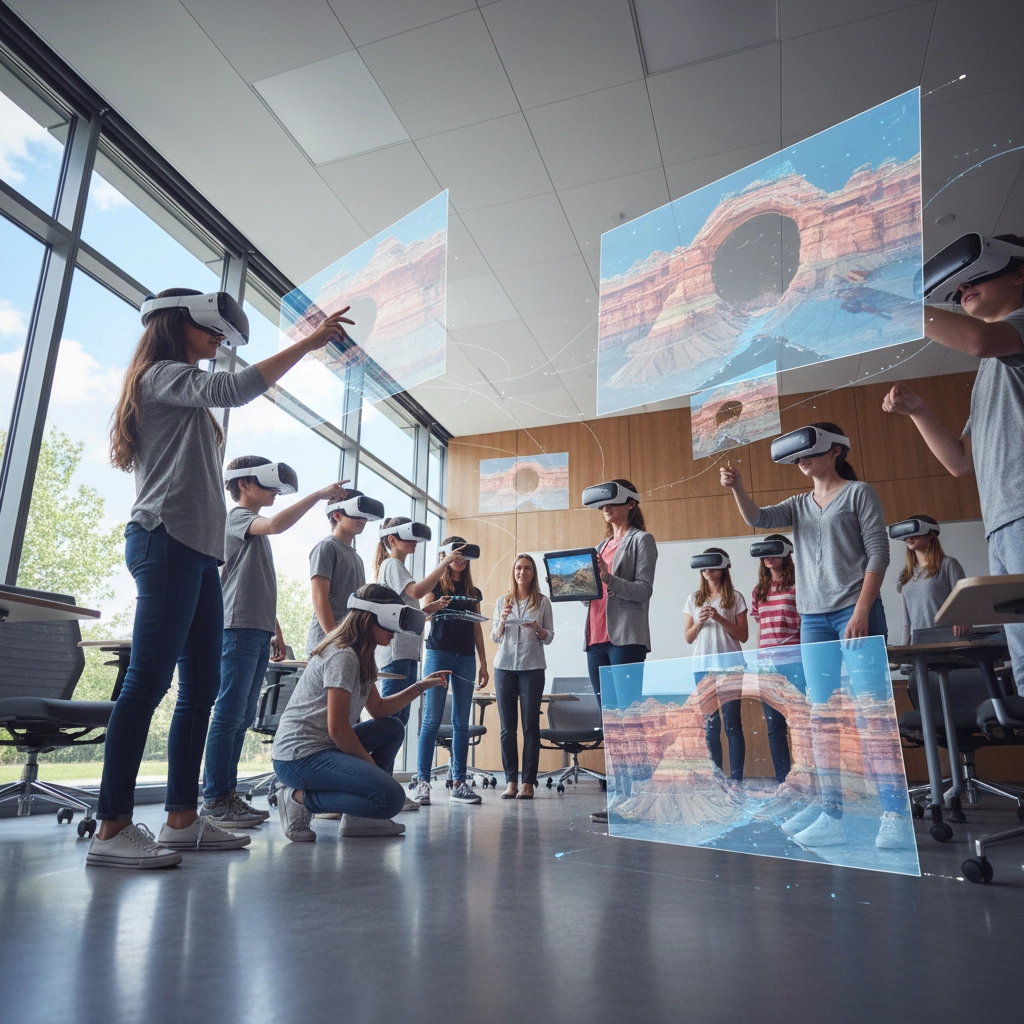School Trip to Grand Canyon vs. Virtual Field Trips: Which Creates More Lasting Impact for Your Students?
- Caleb Mullenix
- 1 hour ago
- 4 min read
Selecting the optimal educational experience for your students requires careful consideration of learning outcomes, accessibility, and long-term impact. The choice between in-person Grand Canyon field trips and virtual alternatives represents a critical decision that will shape your students' academic growth, personal development, and connection to Earth science concepts.
Recent educational research reveals surprising insights about both approaches, challenging traditional assumptions about experiential learning. Understanding these findings will enable you to make informed decisions that maximize educational value while addressing practical constraints your school may face.
The Transformative Power of In-Person Grand Canyon Expeditions
In-person Grand Canyon field trips deliver profound personal transformation that extends far beyond traditional classroom learning objectives. These extended expeditions, typically spanning 10 days, immerse students in comprehensive geological education while developing critical life skills including determination, responsibility, leadership, and effective communication.
Academic and Personal Development Outcomes
Students participating in canyon expeditions experience measurable behavioral changes that persist long after their return. Research consistently demonstrates that participating students exhibit increased maturity levels and frequently emerge as classroom and school leaders. These young explorers retain vivid memories years later, continuing to discuss their canyon experience throughout their high school careers.
The physically demanding nature of these trips: including an 11-mile uphill trek from Havasu Falls to the canyon rim: builds resilience and self-confidence through managed challenge. Students camp in the canyon, disconnect from electronic devices, and develop genuine connections with peers while appreciating the natural environment's beauty and tranquility.

Comprehensive Educational Integration
Canyon expeditions integrate multiple academic disciplines seamlessly. Students explore geological layers to understand life's evolution on Earth, complete daily journals incorporating science lessons and mathematical equations, and engage with park rangers and local Supai Indians who share cultural and environmental knowledge.
The immersive experience enables spontaneous learning opportunities that cannot be replicated in controlled environments. Students use all their senses to investigate geological formations, observe wildlife behavior, and witness weather patterns affecting canyon ecosystems.
Investment and Accessibility Considerations
These transformative experiences require significant financial investment, typically costing $700 per student. Schools successfully manage these costs through strategic fundraising efforts, grant applications, and community partnerships. However, physical limitations, health conditions, and financial constraints may prevent some students from participating in these expeditions.
Virtual Field Trips: Accessibility and Measurable Learning Gains
Virtual field trips utilizing 360-degree interactive imagery offer remarkable learning advantages while eliminating traditional accessibility barriers. Recent comparative research examining virtual field trips (iVFT) against in-person Grand Canyon experiences reveals that virtual formats can produce significantly greater cognitive and affective learning gains than their in-person counterparts.
Enhanced Learning Outcomes Through Technology
Virtual platforms employ high-resolution 360-degree spherical images with interactive overlays, enabling students to explore and analyze canyon content within immersive digital environments. Research demonstrates that students completing virtual Grand Canyon experiences achieved pre-concept sketch scores three times higher than their in-person counterparts, indicating superior conceptual understanding development.
These digital experiences allow students to explore at individualized paces, revisit areas of particular interest, and access detailed information through interactive elements. Students appreciate the ability to control their exploration while receiving guided instruction from educators.

Cost-Effectiveness and Universal Access
Virtual field trips eliminate substantial financial barriers by requiring no transportation, insurance, or overnight accommodation expenses. This cost-effectiveness enables schools to reach underserved populations and students with mobility limitations, health conditions, or geographic constraints that would prevent canyon access.
Remarkably, research indicates that approximately 90% of students completing virtual Grand Canyon field trips develop increased interest in visiting the location in person, suggesting virtual experiences enhance rather than diminish motivation for real-world exploration.
Comparative Analysis: Measuring Educational Impact
Learning Dimension | In-Person Field Trips | Virtual Field Trips |
Cognitive Learning Gains | Met established learning outcomes with guided inquiry approaches | Significantly greater cognitive gains; 3x higher pre-concept scores |
Personal Development | Develops leadership, responsibility, maturity, communication skills | Primarily focuses on academic learning objectives |
Cost Per Student | $700 including transportation and accommodation | Minimal cost; standard classroom technology requirements |
Accessibility | Limited to physically capable students; geographic constraints apply | Universal access for all students regardless of limitations |
Sensory Engagement | Engages all senses; enables spontaneous discoveries | Visual immersion with controlled interactive exploration |
Long-term Memory | Strong personal bonds; vivid memories persisting years later | Educational impact without equivalent emotional connection |
Time Investment | 10-day absence from regular school schedule | Single classroom session or modular implementation |
Safety Considerations | Requires comprehensive risk management and emergency planning | Minimal safety concerns; controlled classroom environment |

Strategic Recommendations by Educational Scenario
Choose In-Person Field Trips When:
Prioritize in-person Grand Canyon expeditions when your educational objectives emphasize transformative personal development alongside academic learning. These experiences prove most valuable when:
Funding exists through grants, fundraising, or community partnerships
Building school community and strengthening student relationships represents a primary goal
Students require confidence-building through managed physical challenge
Long-term behavioral and social-emotional growth takes precedence over immediate academic metrics
Your school can manage complex logistics including transportation, supervision, and emergency planning
Choose Virtual Field Trips When:
Virtual experiences offer optimal solutions when practical constraints limit traditional field trip implementation:
Budget limitations prevent expensive transportation and accommodation
Students with mobility limitations, health concerns, or other accessibility needs require accommodation
Maximizing cognitive learning gains within limited timeframes represents the primary objective
Geographic distance makes Grand Canyon access logistically challenging
You need to serve diverse populations including underserved communities
Optimal Hybrid Strategy
Consider implementing a combined approach that maximizes both accessibility and transformative impact. Begin with virtual field trips as cost-effective introductions that generate student interest while ensuring all learners access canyon geology concepts. Subsequently, pursue in-person experiences for engaged students who demonstrate high motivation, achieving the transformative personal development that influences their academic and social futures.
This sequential strategy enables schools to serve entire student populations through virtual access while providing transformative experiences for students most likely to benefit from intensive canyon expeditions.
Ensuring Educational Excellence Through Informed Decision-Making
Your choice between in-person and virtual Grand Canyon experiences should align with your specific educational objectives, available resources, and student population needs. Both approaches offer distinct advantages when implemented strategically with appropriate preparation and clear learning goals.
Remember that the most effective educational experiences result from careful planning, comprehensive preparation, and alignment between chosen methods and intended outcomes. Whether you select virtual exploration, in-person expedition, or hybrid implementation, success depends on thorough preparation and sustained commitment to educational excellence.
For educators seeking transformative Earth science experiences that combine the accessibility of virtual learning with the impact of hands-on exploration, consider investigating opportunities at Yellowstone National Park. Appleseed Expeditions specializes in creating educational adventures that enable students and educators to experience Yellowstone's geothermal wonders, wildlife ecology, and geological formations through carefully designed science expeditions that prioritize both safety and educational impact.



Comments